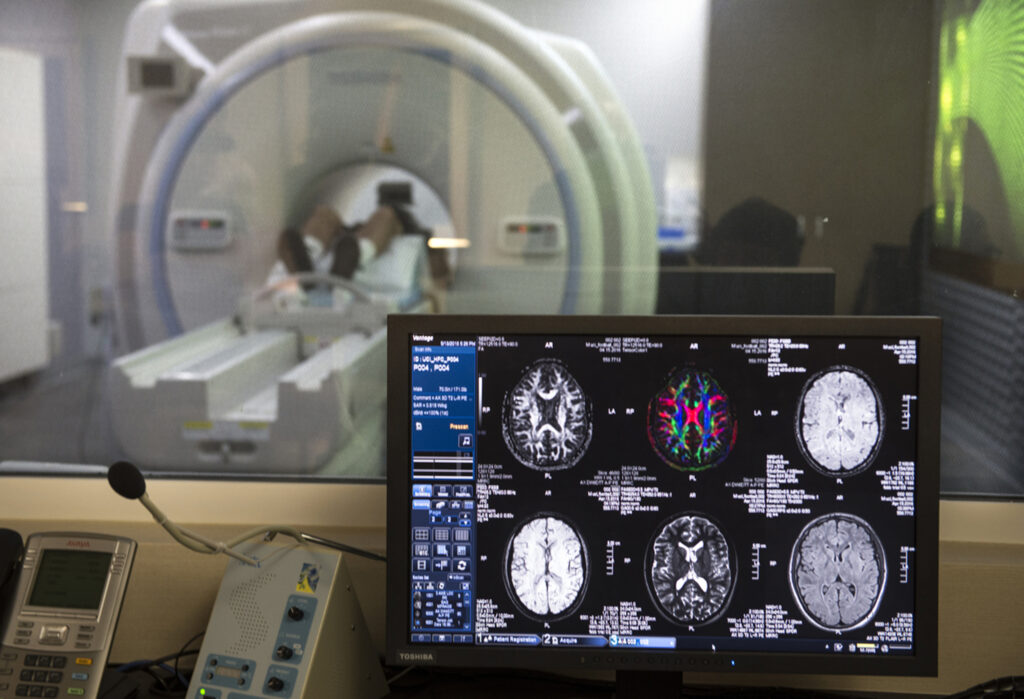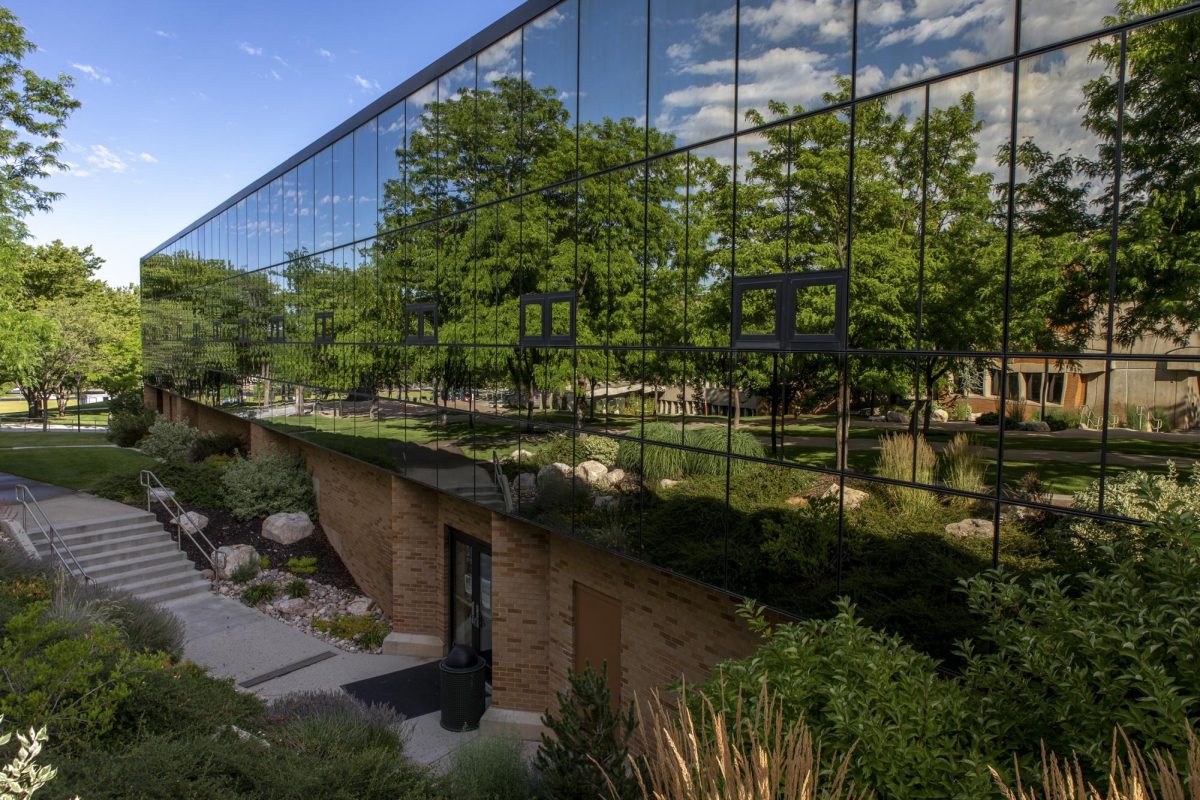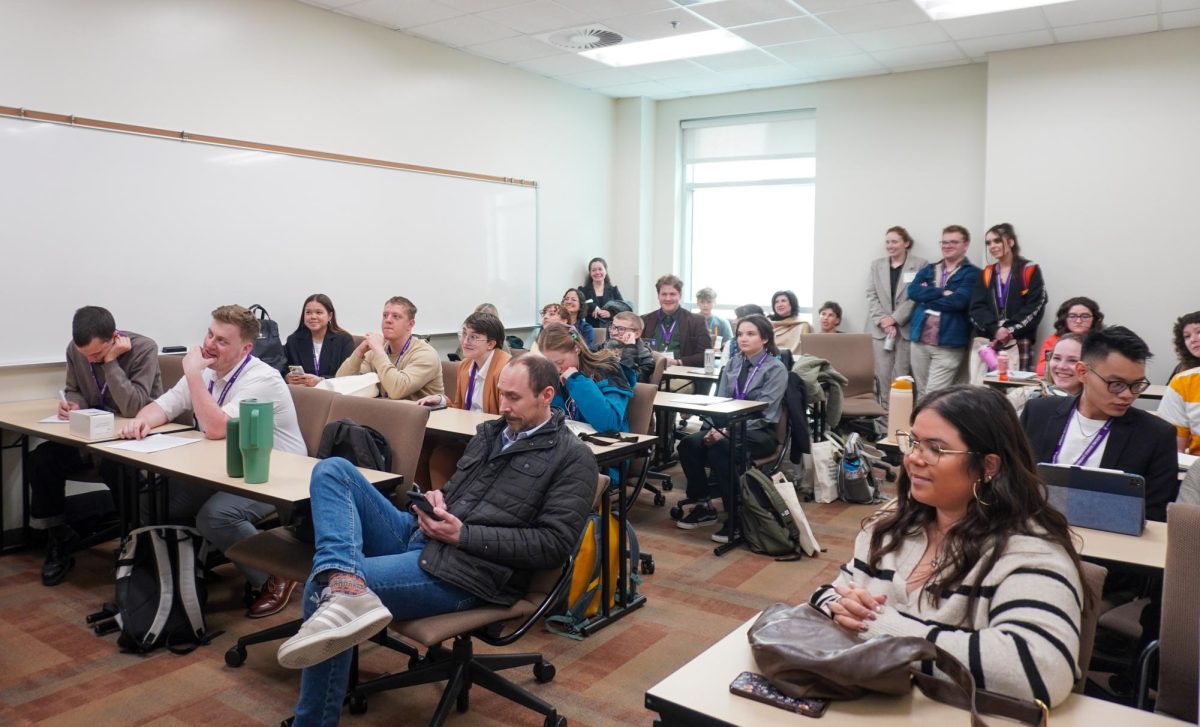
Four neuroscience and psychology students from the graduate program at the University at Utah came for the Neuroscience Lecture Series to talk to prospective graduate program students in those fields.
Sometimes, the best way to learn about a program is to hear from people in the thick of it, so the panelists took questions and described their work in the programs.
The first panelist was Keith Jones, from the neuroscience Ph.D. program. Jones solely represented the neuroscience department.
He described his program as very research based, with no clinical work. His research is practically-minded, focusing on looking into treatment-resistant depression in order to develop new treatments.
“(We use) imaging techniques such as MRI and EEG to explore the biological mechanisms underlying antidepressant response,” Jones said.
The second panelist, who represented the cognitive side of psychology, was Erica Barhost-Cates, from Psychology Ph.D. program — Cognition and Neural Science.
“My research aims to understand the effects of experience on spatial cognitive abilities, including visual perception and navigation,” Barhost-Cates said.
Barhost-Cates uses real- and virtual-reality techniques to measure the differences in movement experience, giving the examples of sports and dance training, and measures the effect of vision loss on spatial thinking and navigating.
Robert Vilsides-Henry, one of two Clinical Child and Family Psychology students in the Ph.D. program, focuses his research on transition points throughout life.
“My research goals are focused on understanding the biosocial impact of transition points throughout the lifespan, on emotionally unregulated individuals,” Vilsides-Henry said.
He gave the examples of birth, puberty and young adulthood transitions. He is looking at these moments in the human life through a developmental psychopathology standpoint, examining the effects of transitions across multiple levels of analysis.
His examples of those levels were peripheral psychophysiological markers, and moment-to-moment observational coding.
The other clinical psychology panelist was Robyn Kilshaw.
“I’m interested in developmental consequences of early adverse experiences, in particular childhood maltreatment and other interpersonal trauma,” Kilshaw said.
She is currently researching the role of the traumatic experience in the development of callous-unemotional traits and delinquent behaviors in juvenile justice centers.
After the first year of graduate school for neuroscience and psychology, in which students closely focus on a field of research like each of the ones panelists described, students take a capstone exam. The panel explained students are already expected to have joined a lab by that point in the degree.
After a student joins a lab and a research project, a graduate student is expected to learn to and actively be writing grants for research.
Ph.D. students are required to be writing, researching and thinking about their dissertation, as well as doing their other research.
For Clinical Psychology graduate school, the research aspect is not as important as being immersed in a clinical setting and actively working in the field. Therefore, a year-long clinical replaces the intense research portion.
The panel laughed when asked about the usefulness of a master’s degree in these fields. They said if an individual wants to spend their career in these fields, a master’s simply isn’t enough. Because of this, they said the vast majority of students just go straight for their Ph.D.
The panel explained what graduate school looks like for each of the three variations they are currently pursuing and the differences between them. The main similarity was the length of the Ph.D. program: about 6 years, with the last three mostly spent in the field, doing internships, clinicals and research.
The panel also agreed that, generally, programs don’t want students having a job outside of school. Schools usually give students a stipend to perform research or be a research assistant or a teacher’s assistant while they’re finishing their degree.
“Cross Ph.D. programs off your list that don’t provide stipend because plenty do,” Barhost-Cates said.
Because programs want students focused on research, most of the time students take under five classes, with those classes focusing on teaching that helps research skills. Exams are rare.
The audience also asked about ways to stand out when applying to competitive graduate programs.
“Even though grades and the GRE don’t matter the most, they are the first hurdle,” Vilsides-Henry said.
The panel explained even though advisers push standing out, if a student’s grades and test scores aren’t there, none of that matters.
They noted a computer sorts through the applications and automatically eliminates those with low GPA or GRE scores. However, after that process, standing out from the pack becomes much more important.
“Your life story matters,” Barhost-Cates said.
They agreed the most helpful thing students can do to stand out would be directly contacting advisers, mentors, professors and researchers at the institution they’re applying to and introduce themselves.



















